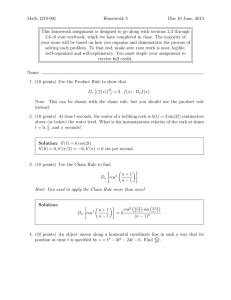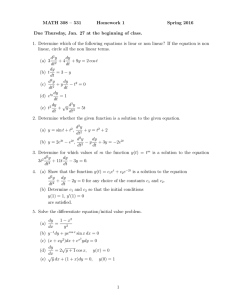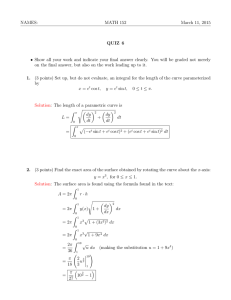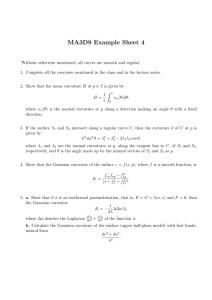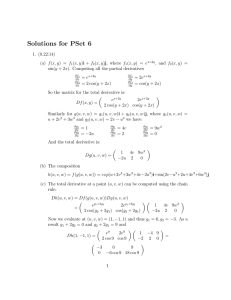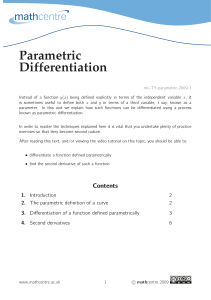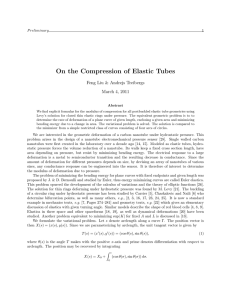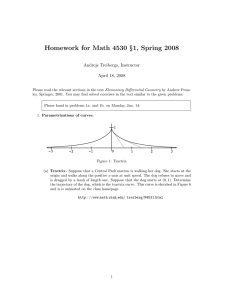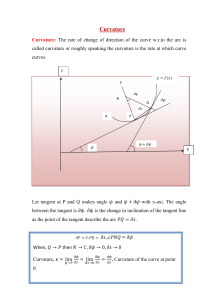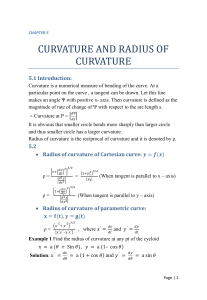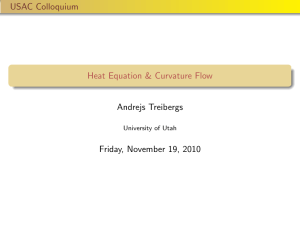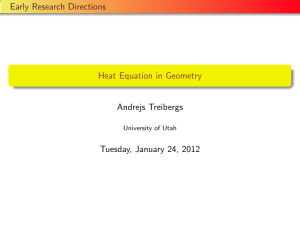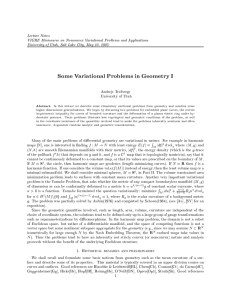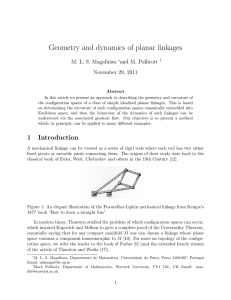Math 217: Some solutions to Assignment 2 13.1 # 40: + y
advertisement
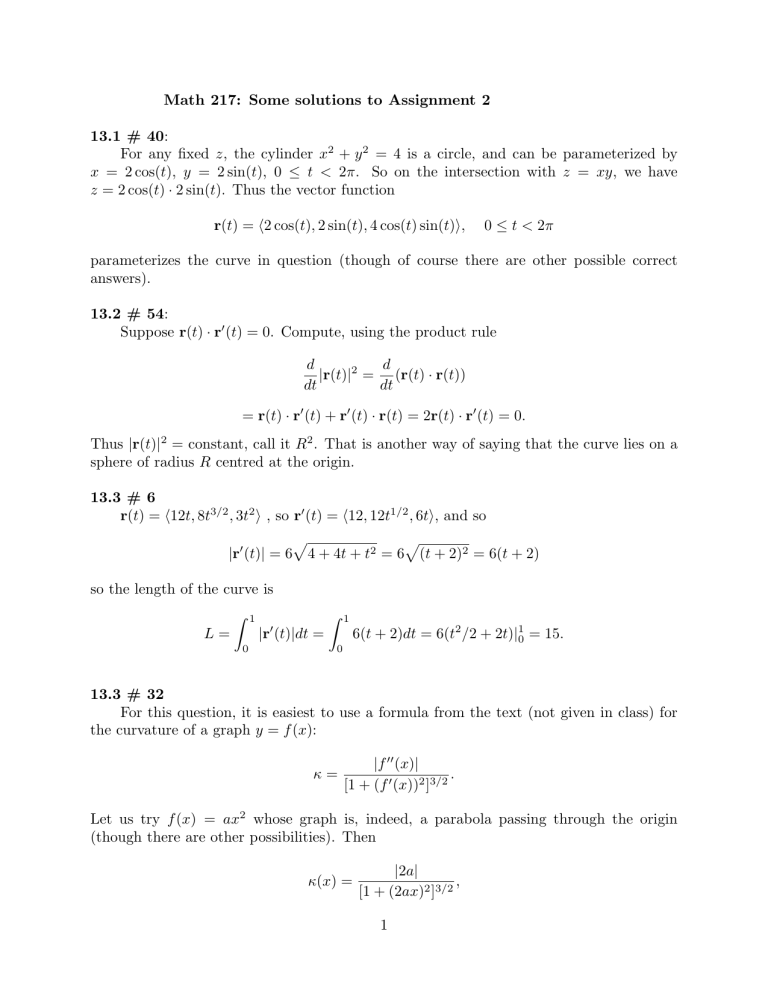
Math 217: Some solutions to Assignment 2 13.1 # 40: For any fixed z, the cylinder x2 + y 2 = 4 is a circle, and can be parameterized by x = 2 cos(t), y = 2 sin(t), 0 ≤ t < 2π. So on the intersection with z = xy, we have z = 2 cos(t) · 2 sin(t). Thus the vector function r(t) = h2 cos(t), 2 sin(t), 4 cos(t) sin(t)i, 0 ≤ t < 2π parameterizes the curve in question (though of course there are other possible correct answers). 13.2 # 54: Suppose r(t) · r0 (t) = 0. Compute, using the product rule d d |r(t)|2 = (r(t) · r(t)) dt dt = r(t) · r0 (t) + r0 (t) · r(t) = 2r(t) · r0 (t) = 0. Thus |r(t)|2 = constant, call it R2 . That is another way of saying that the curve lies on a sphere of radius R centred at the origin. 13.3 # 6 r(t) = h12t, 8t3/2 , 3t2 i , so r0 (t) = h12, 12t1/2 , 6ti, and so p p |r0 (t)| = 6 4 + 4t + t2 = 6 (t + 2)2 = 6(t + 2) so the length of the curve is Z 1 0 Z |r (t)|dt = L= 0 1 6(t + 2)dt = 6(t2 /2 + 2t)|10 = 15. 0 13.3 # 32 For this question, it is easiest to use a formula from the text (not given in class) for the curvature of a graph y = f (x): κ= |f 00 (x)| . [1 + (f 0 (x))2 ]3/2 Let us try f (x) = ax2 whose graph is, indeed, a parabola passing through the origin (though there are other possibilities). Then κ(x) = |2a| , [1 + (2ax)2 ]3/2 1 and so the curvature at the origin is κ(0) = 2|a|. So if we choose a = 2, giving y = 2x2 , we have curvature 4 at the origin. 13.4 # 16 v0 (t) = a(t) = h2, 6t, 12t2 i → v(t) = h2t, 3t2 , 4t3 i + c. Now h1, 0, 0i = v(0) = c. Then r0 (t) = v(t) = h2t + 1, 3t2 , 4t3 i → r(t) = ht2 + t, t3 , t4 i + d. Now h0, 1, −1i = r(0) = d, so r(t) = ht2 + t, t3 + 1, t4 − 1i. 13.4 # 22 Suppose the particle’s path is described by the vector function r(t). If its speed is constant, then |v(t)| = const, where v(t) = r0 (t). So 0= d d |v(t)|2 = v(t) · v(t) = 2v(t) · v0 (t) dt dt which says that the velocity is orthogonal to the acceleration. (Sept. 26, 2013) 2
